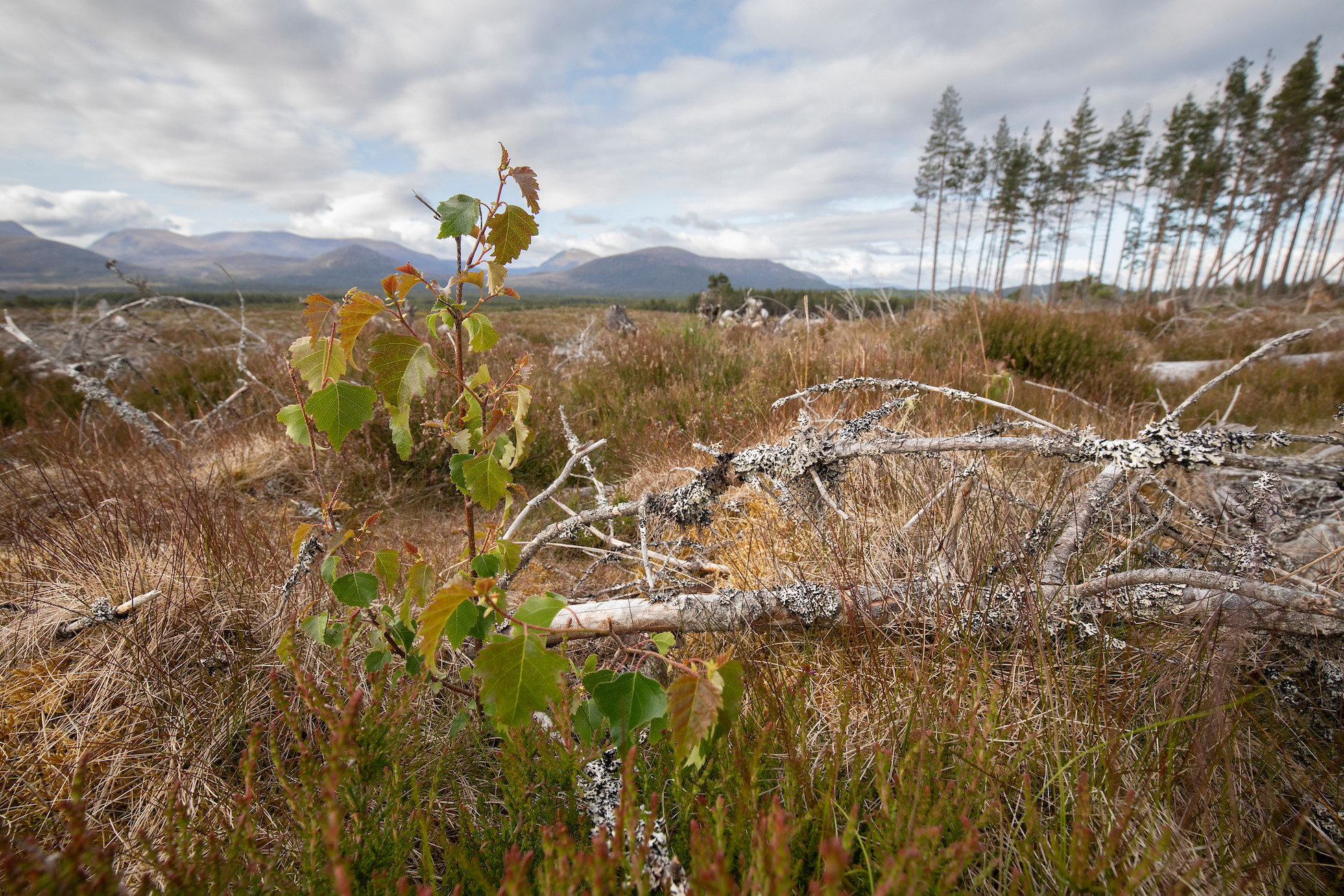Less is Moormore
Letting nature lead can be difficult. In our nature-depleted landscapes, it is often hard for conservationists to relinquish control, to allow wild nature to develop in whichever way it chooses. But for Duncan Lawson, letting nature lead is fundamental to rewilding.
When 65 acres of recently felled plantation became available for long-term lease on the Rothiemurchus Estate in 2020, Duncan Lawson saw a rare opportunity to put a bold idea to the test. It might not have been everyone’s idea of a rewilding nirvana, but for Duncan it was the perfect chance to answer a question he had begun pondering: what would happen to a commercial clear-fell site if it was simply left to nature?
‘I think the fact that it was almost like a ground zero site for rewilding made it intriguing,’ he explains. ‘Having worked pretty hard through my 20s, doing long hours and not spending a lot of time on the things I really enjoyed, I reached my 30s, met my wife, and started thinking a bit more about things.’ He was then diagnosed with testicular cancer, and underwent surgery followed by chemotherapy. ‘You get the feeling that life is quite short,’ reflects Duncan. ‘So if you have opportunities to do things you should take them.’
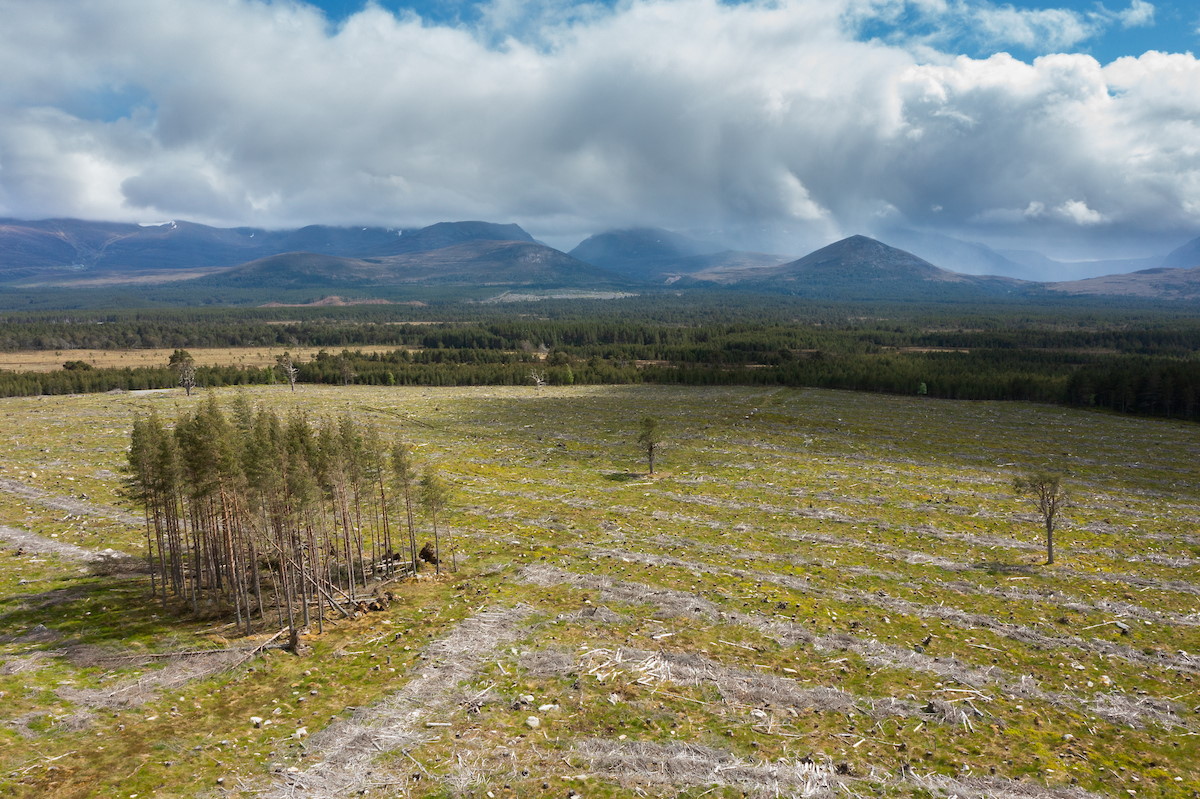
When Duncan Lawson took over the clear-fell site at Moormore, he saw an exciting opportunity to explore what can happen when nature is given free rein from ‘ground zero.’
As luck would have it, the Moormore lease became available at just the right time. ‘I had been interested in what SCOTLAND: The Big Picture was doing, promoting a wilder Scotland, and when their Northwoods Rewilding Network started, I spotted that maybe this site could fit into that.’
‘Spending lots of time in one place, you observe tiny changes.’
Five years on, Moormore still has a rather raw and superficially unremarkable – even industrial – appearance. Piles of brash lie in clearly discernible rows and at first glance, the whole area appears treeless except for a scattering of mature granny pines. But appearances can be deceiving, and we soon discover a riot of life emerging underfoot.
As we walk around, Duncan’s apparent familiarity with every inch of Moormore reminds me of the detailed knowledge of a dedicated patch birder. He reflects on the quiet rewards of paying close attention: ‘Spending lots of time in one place, you observe tiny changes, you build a mental map, you develop an interest in how things are changing, and that brings an emotional connection.’
Such a connection might have sparked a desire to interfere for some, but from the outset, Duncan has resolved to let the site develop how it wants, without undue interference from him. ‘In the early days, the site was covered in grass,’ he recalls. ‘I worried a bit that nothing else would be able to get established, but that hasn’t happened. The pulse of grass has been followed by the emergence of heather, blaeberry, and now broom.’
‘You can argue about passive or active approaches, but I just try to be happy with whatever happens next.’
His approach hasn’t been exclusively hands-off however, with Duncan allowing himself some small interventions. He continues to pull up non-native seedlings and has introduced some missing species within seven seed islands – small fenced structures planted with carefully selected native species like alder and aspen. He justifies this on the grounds that they would probably have occupied this site naturally, had they not been removed by previous human activity. ‘You can argue about passive or active approaches, but I just try to be happy with whatever happens next.’
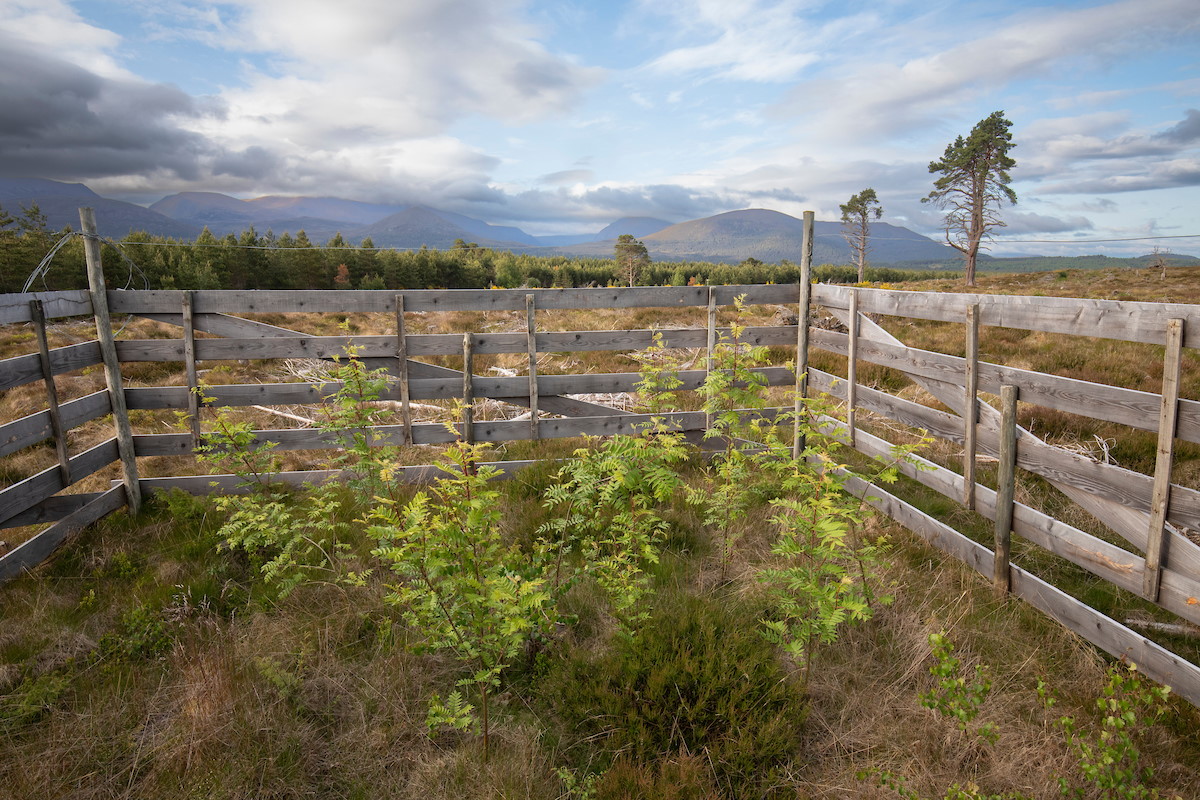
Seed islands represent one of the few interventions Duncan has undertaken, accelerating the rewilding of the site within what he believes are natural parameters.
He remains determinedly sanguine about how the site develops. ‘I think forest is what would have been here without all the historic human activity, and we’re lucky to have high quality native woodland nearby. But we might get some sort of mosaic developing. I’m just enjoying the process.’
‘Fundamentally, rewilding is about letting nature lead,’ says Duncan, so his guiding principle is to let nature make the decisions. ‘The interventions I have made have just been an attempt to undo any previous man-made interventions.’ This has been largely limited to removing the remaining non-native sitka spruce and lodgepole pines, as well as taking down the deer fence, which represented an obvious, artificial boundary and a hazard to wildlife.
‘Fundamentally, rewilding is about letting nature lead.’
Duncan describes removing 1.9 kilometres of dilapidated fence from the site’s perimeter as a cathartic experience, working outside, alone, with hand tools through the winter months. The work reconnected the site with the surrounding woods but also allowed him, in his words, to ‘...reconnect with a more authentic version of myself.’
Removing the perimeter fence reunited Moormore with its surroundings, re-establishing landscape connectivity and restoring natural processes manifested by the passage of wild animals.
As happy as he is in his own company, Duncan is grateful for the deer management taking place nearby, which allowed him to remove the fence in the first place. ‘I’m getting the benefits of the landscape scale rewilding taking place here in the Cairngorms,’ he tells me. ‘If I wasn’t surrounded by low deer densities, I’d have had to fence this place to achieve any woodland regeneration.’
‘It’s not all about trees, the deer are a central part of this landscape.’
At the same time, he’s keen that deer are not cast as villains. As he stops to inspect a nibbled rowan seedling, he welcomes the natural dynamism and complexity of the relationship on show. ‘It’s not all about trees, the deer are a central part of this landscape,’ he emphasises. And there are other animals here too, including badgers and pine martens. ‘I don’t see them very often but I know they’re here, and I like to think about them getting on with their business.’
Now living in Stirlingshire with his growing young family, Duncan visits Moormore every three months, taking photographs from a series of fixed points to document the changes happening here. He is an accountant by training but has a naturalist’s eye for tiny details, and there is always something new to see. He stops regularly as we explore the site together, noticing a late wood anemone flower, a green orb spider and the song of a whinchat perched on top of a granny pine.
‘These wood anemones only spread a short distance each year, so you know that when you see them over a wide area, there has been a woodland here for a long time,’ he explains, before diving off to one side to inspect an ant’s nest. ‘Worth looking in case they are narrow-headed ants,’ he says. His enthusiasm is infectious and the old clear-fell site begins to feel different – a place of rebirth rather than destruction.
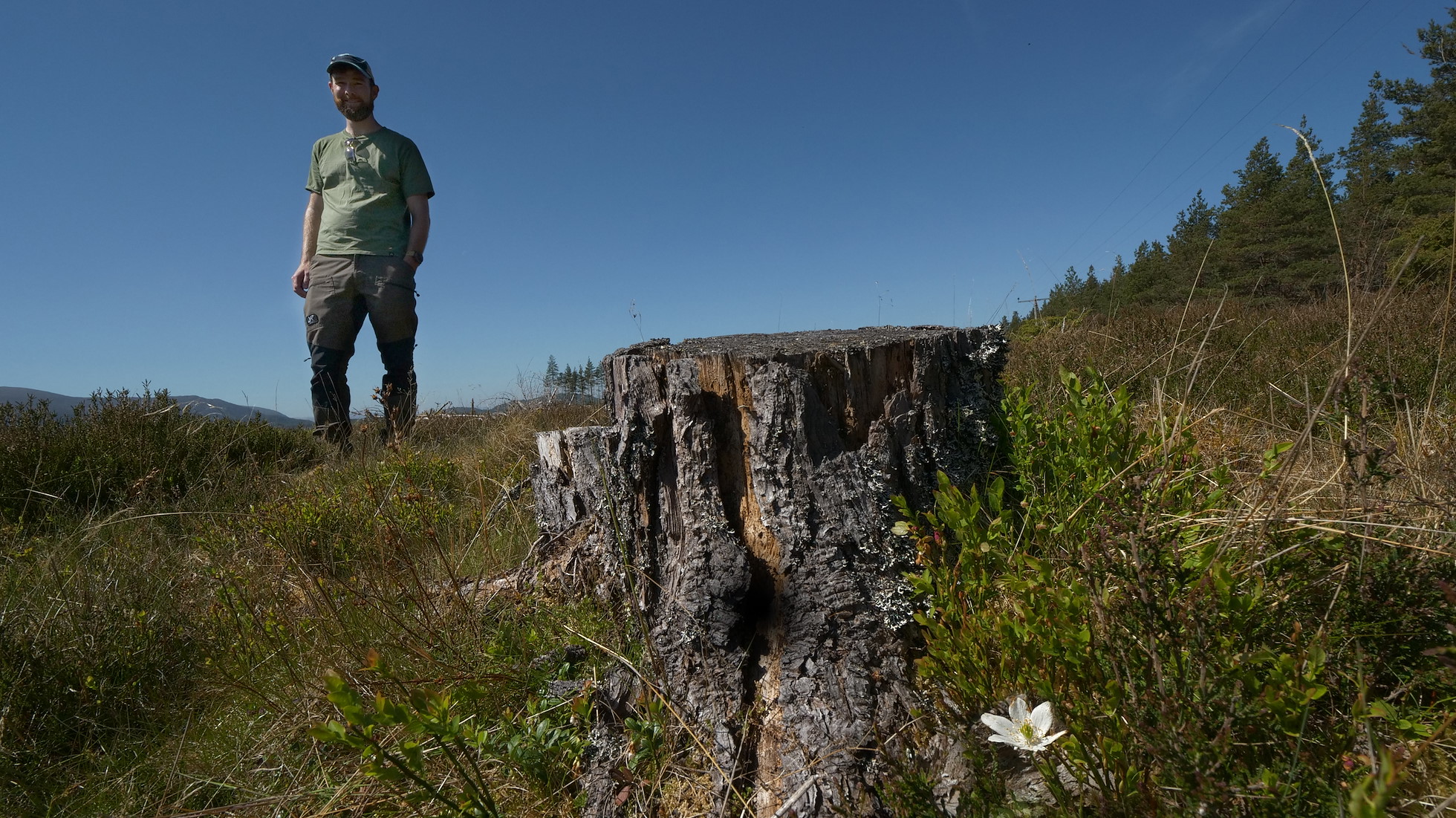
Duncan helps us see Moormore differently. A place of natural regeneration, where nature is in charge and the future is wild.
Through Duncan’s eyes, the history of the site is brought to life. He points out two sycamores and several red elderberry shrubs, non-natives that are coppicing under regular browsing pressure. Duncan believes they are relicts of old gamebird pens, where these species were often planted for cover. He hasn’t removed them because he thinks they may be diverting deer from the native seedlings emerging out of the heather all around us.
‘I’d love to see a diverse forest emerge, acting as the foundation for lots of other species thriving here.’
It’s another example of the subtle tensions influencing Duncan’s management decisions as he seeks to strike a balance between letting nature lead and intervening to re-establish a naturally diverse and resilient environment. Debating what to do with an area of windblown timber, he outlines his thinking. ‘It’s not ideal for the understorey plants and, ultimately, it’s not natural, as this is all an old plantation. But it’s not so dense that nothing can grow under it, and it may even help some seedlings get away, sheltered from the deer. So I think I’ll just let it go.’
Sure enough, we see masses of young birch and rowan springing up between the fallen pines, alongside some willowy saplings that have already shot up above head height, creating a pleasing mix of age classes. ‘It would be lovely if this develops into a really mixed-age forest,’ says Duncan. ‘I’d love to see a diverse forest emerge, acting as the foundation for lots of other species thriving here.’

It’s only been a few years since Moormore was felled but already the rough brash piles are collapsing, heather and blaeberry are thriving, splashes of colour are emerging, and trees are reappearing.
I ask Duncan more about his vision of the future and he points to the whale-backed summits that frame the horizon, noting the unseasonal absence of snow from the Northern Corries. The spectre of climate change looms large over this landscape and Moormore is no more immune to its impact than anywhere else. The possibility of a wildfire worries Duncan, but whatever the future may bring, he finds solace in knowing that nature is adaptable.
‘I have a bit of an issue with people who say: “We've got a 200-year vision…” because it implies that you are the only people who can be custodians of this land,’ he says. ‘I think lots of people should be able to be custodians, especially in Scotland where the pattern of land ownership is not ideal. I think if more people had parcels of land, if we democratised it a bit, we’d have better habitats overall – more mosaics probably – rather than huge swathes doing one thing or another.’
This philosophy means he’s happy to be a leaseholder rather than a landowner. Indeed, he quite likes ‘...the idea of this place reverting back to someone else at some point.’ Precisely what they might inherit remains unclear, but it seems certain that it will be a wilder place than it is now, a place where nature has been allowed to express herself on her own terms. It’s often said, ‘if you love something, let it go,’ and perhaps there is no greater love of nature than that expressed through Duncan’s approach. In a nation of constant gardeners, he has been prepared to down tools and wade into the weeds of uncertainty. I for one, can’t wait to see what happens next.
